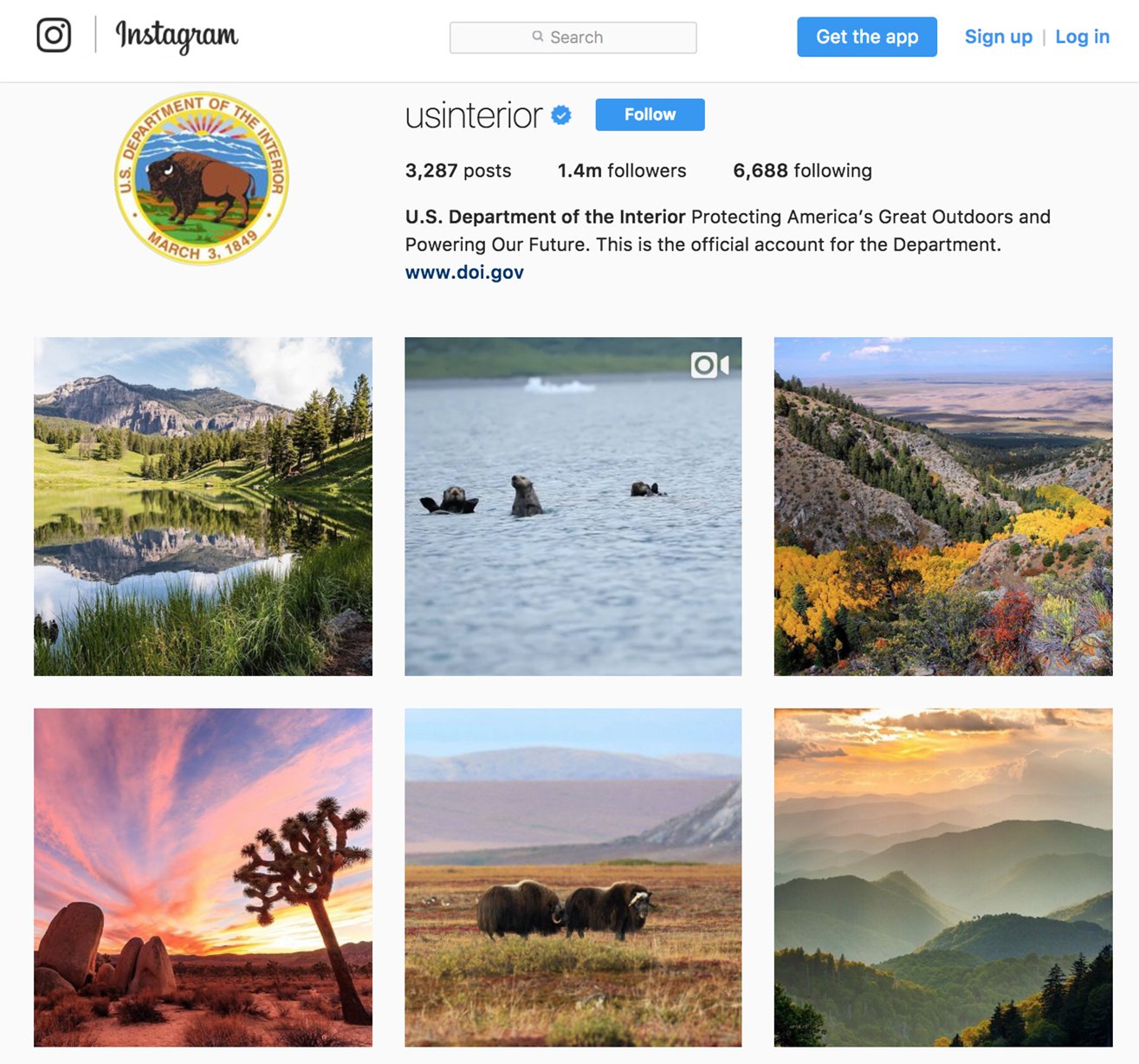INTERIORS AND THE “PUBLIC EYE”
Interiors and the “Public Eye”
Mangold, William. 2018. “The Public Eye,” Interiors + Sources, May 2018 issue.
Instagrammable spaces are all the rage. Places that have a great color, pattern, or graphic—ideally situated for someone to snap a photo of themselves to post on a social media—are creating a new type of design cache. These spaces draw both real visitors and virtual “likes” in a way that underscores public appearance and suggests social status can be gained through an appropriate backdrop. A recent article featuring the Museum of Ice Cream asked, “Can Real Life Compete with an Instagram Playground?” and highlighted the celebrity escapades of Jay-Z and and Beyonce as they cavorted in an au courant pink pool room filled with sprinkles. Tickets are sold out, btw.
Even remote places in the national parks are taking on new life as people seek unique photo locations. A number of recent articles have discussed how “Instagram Hikers” are both “saviors and scourges” in their enthusiasm to find and post images of great natural sites (or more accurately, sights). While the influx is most evident through the proliferation of social media—and yes, the United States Department of Interiors has an Instagram account—even those who don’t use social media appreciate a great scene for a photo. These places can convey a sense of who we are, what we love, and maybe even a hint of what envy-worthy things we are doing.
In many ways this is great for interior design, which has always played a role in expressing identity and status. The demand for photo-ready spaces presses clients and designers to pursue interesting colors and materials, and consider views and experiences in new ways. What does it take to get the lighting just right; the field of view framed perfectly for the moment? This challenge is one that interior designers are well equipped to meet. Creating interior spaces involves the careful specification of materials, colors, and patterns to produce an atmosphere that conveys a unique sense of place. It’s not surprising that these spaces might draw attention and photograph well. But here’s a catch: are they drawing attention because they photograph well, and is that enough to celebrate a place?
As trendy as these Insta-worthy spaces may be, they are only the newest iteration in a long-standing phenomena that Juhani Pallasmaa has spent his career discussing. Pallasmaa is a designer and critic whose scholarship is rooted in a critique of vision as the dominant mode. He argues that since the invention of perspective in Renaissance painting, people have favored the visual over other sensory experiences. In doing so, we settle for a more limited and superficial experience of places. He advocates for a full-bodied, haptic engagement with the environment in which we slow down to appreciate the smells and sounds in a space and understand it through physical contact. It makes us ask: Are we willing to trade the instant gratification of an image and a [heart emogi] for the satisfaction that comes from knowing a place more intimately?
Perhaps we can have our cake and eat it too. The most interesting design and scholarship addressing the public realm seeks to blur or invert the relationship between public and private. By doing so, this work challenges us to become aware of our engagement with the environment and question our relationship to place and the people around us. Like interior design, social media offers the potential to fashion new relationships between public and private. Private, individual experiences are made public and communal. Shared, public information becomes the basis for private decisions and experiences.
Aaron Betsky, writing about the work of Diller + Scofidio (now Diller Scofidio + Renfro) suggests, “our stores, restaurants, bars, theaters, and other places where display takes place are the institutions around which our lives now revolve. We come to cities more to have an experience—to see, to be seen, to buy, to acquire well-packaged information…” He argues that display has become a fundamental aspect of contemporary life, but that by making these experiences and their underlying mechanisms explicit, Diller + Scofidio are able to “make visible the technologies of desire” and “reconstruct the rituals of control.” In doing so, Betsky concludes, “Their ambition is to use the techniques of blur to make constructions in which one is never quite sure what one is experiencing, where one is, or how one should behave.”
The High Line in New York City epitomizes this inversion and blurring: re-making private spaces bordering the formerly abandoned rail line into new showrooms of consumption; framing views of busy public street traffic for the leisurely and privileged gaze; winding a public pathway through some of the city’s most expensive real estate. Other DS+R projects do similar things in different ways—the former Brasserie restaurant in the Seagram Building, or the renovation of Lincoln Center and the Julliard School—each highlighting and probing one’s sense of seeing and being seen in public. At its best, interior design alters the boundaries of inside and outside, private and public, invigorating our sense of people and place, and giving us opportunity to engage in more nuanced ways.
References:
Bereznak, Alyssa. Aug 9, 2017. “Can Real Life Compete With an Instagram Playground?”
https://www.theringer.com/tech/2017/8/9/16110424/instagram-playground-social-media
Betsky, Aaron. 2003. “Display Engineers,” in Scanning: The Aberrant Architecture of Diller+ Scofidio. Reprinted in Toward a New Interior: An Anthology of Interior Design Theory, Lois Weinthal, ed. 2011. pp. 559-573.
https://www.instagram.com/beyonce/
https://www.instagram.com/usinterior/
https://www.museumoficecream.com/
McHugh, Molly. Nov 3, 2016. “Loved to Death: How Instagram Is Destroying Our Natural Wonders.”https://www.theringer.com/2016/11/3/16042448/instagram-geotagging-ruining-parks-f65b529d5e28
Nosowitz, Dan. Dec 11, 2015. “Why ‘Instagram Hikers’ Are National Parks’ Saviors — and Scourges.” http://nymag.com/selectall/2015/12/why-outdoors-nerds-hate-instagram-hikers.html
Pallasmaa, Juhani. 1999. "Toward an Architecture of Humility: On the Value of Experience," in Harvard Design Magazine No. 7, Winter/Spring 1999.
Pallasmaa, Juhani. 2005. The Eyes of the Skin. Architecture and the Senses. John Wiley: New York.
Related Materials: Download PDF of Article

